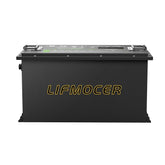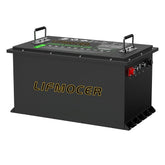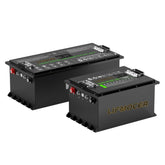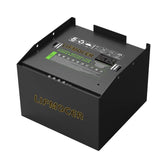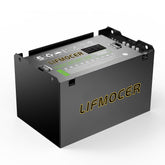Lithium Jump Starter: The $430M Market Poised for 2025 Explosion
Introduction
As the global automotive industry accelerates its embrace of electrification, a portable and high-performance lithium jump starter is making waves in the consumer and commercial fields. This small and powerful device has evolved from a convenient emergency tool to an essential tool for modern car maintenance.
According to authoritative industry data, the lithium jump starter market will reach $430 million by 2025. This growth trend not only confirms the market's strong demand for efficient emergency start solutions, but also reflects the technological innovation of lithium batteries and the improvement of consumer safety awareness.
What Is a Lithium Jump Starter?
A lithium-ion car jump starter, also known as a portable jump starter or battery booster, is a compact and efficient power supply device that activates a vehicle's dead battery by outputting instantaneous high current. Compared to traditional lead-acid battery starters, lithium jump starter has significant advantages: the body weight is reduced by more than 50%, it supports USB charging and recycling, and it can stably start in a wide temperature range of -20℃ to 60℃, avoiding the risk of performance degradation at low temperatures or expansion at high temperatures. An essential emergency tool for cars, motorcycles, trucks, and even boats.
Market Growth Drivers
- Vehicle Electrification: As the degree of vehicle electrification increases, the risk of battery exhaustion also increases, which drives the demand for lithium jump starter supplies.
- Compact & Lightweight Design: With the energy density advantage of lithium-ion technology, such devices can achieve a 30% reduction in body size and a 50% reduction in weight while maintaining strong starting performance, which is very attractive to both individual users and fleet scenarios.
- Safety & Smart Features: Premium models are equipped with reverse polarity protection, USB charging ports, flashlights and smart clamps to build a versatile roadside emergency solution.
- DIY Car Maintenance Trend: The increasing awareness of self-maintenance around the world has made drivers more inclined to solve basic faults such as battery exhaustion on their own. The user-friendly operating interface and reliable starting performance have further increased the market demand for such battery jump starter supplies.
Lithium vs. Traditional Jump Starters
| Feature | Lithium Jump Starter | Traditional Lead-Acid Starter |
|---|---|---|
| Weight | Lightweight (1–3 lbs) | Heavy (15–30 lbs) |
| Shelf Life | 6–12 months | 3–6 months |
| Charging Time | Faster (2–4 hours) | Slower |
| Portability | Easy to store and carry | Bulky and inconvenient |
| Extra Features | USB ports, flashlights, smart tech | Minimal |
Who Needs Lithium Jump Starters?
Whether you're a daily commuter, off-road enthusiast, or fleet manager, a compact lithium jump starter offers peace of mind. It's ideal for:
- Car owners in cold climates
- RV travelers and van lifers
- Delivery and rideshare drivers
- Outdoor adventurers
- Emergency responders
Top Car Battery Jump Starter Features to Look For
- Amperage Output: Choose based on engine size.
- Battery Capacity: Higher mAh ratings allow multiple jump starts per charge.
- Built-in Safety Protections: Look for overcharge, overheat, and short-circuit protection.
- Multi-functionality: USB ports, laptop charging, SOS lighting, etc.
- Digital Displays: Show voltage, charge level, and status.
Future Outlook: Lithium Jump Starters in 2025 and Beyond
Industry analysts point out that the lithium battery jump starter market will grow at a compound annual growth rate of more than 8% through 2025, driven by the continued rise in global car ownership, frequent power failures, and the trend of outdoor travel.As battery technology continues to develop, more high-energy density, environmentally friendly, and AI-integrated jump starters are expected to be launched.
Conclusion
Lithium battery jump starters are more than just roadside accessories, they are also a symbol of emergency preparedness in modern cars. At the current market growth rate, the segment will reach $430 million by 2025, marking its transformation from an "optional equipment" to a "must-have tool for drivers." Whether it is to deal with sudden battery power shortage scenarios or to meet the growing demand for outdoor travel safety, choosing a lithium jump starter with high reliability, intelligent protection functions and forward-looking technology is becoming an important investment for rational car owners to improve driving safety.


